Research
Core Initiatives
Maintaining site quality is critical to sustaining forest productivity and health. Site nutrient supply may be degraded by silvicultural and harvest management operations that extract significant proportions of nutrient stocks. For example, harvest operations that remove whole trees to the landing may have greater impact than bole-only harvests because of significant removal of nutrient-rich tops and limbs to landings.
Impacts of whole-tree harvest nutrient extractions are expected to be lower on sites with high nutrient stocks compared with those of low nutrient stocks. However, there is little information available comparing high and low productivity sites. Forest harvest nutrient removals and site nutrient stocks can be determined, but questions remain over the relative impact of these removals’ site nutrient supply capacity and sustaining site yield into the future.
This research project involves a core experiment of long-term plots established on newly harvested sites comparing bole-only versus whole tree final harvesting. Study sites are located on soil/rock types that are considered either poor or high productivity. In conjunction with harvest treatment comparisons, various post-harvest silvicultural treatment options are established within the newly harvested areas. Each of these silvicultural treatments can affect a site’s nutrient status and therefore its productivity.
The long-term study is designed to monitor nutrient pools and seedling growth productivity on a series of permanent plots classified by level of slash retention across the various harvest and silvicultural treatment units and options. The objective is to develop guidelines for various site types that land managers can use to assess probable impact of management operations on future growth.
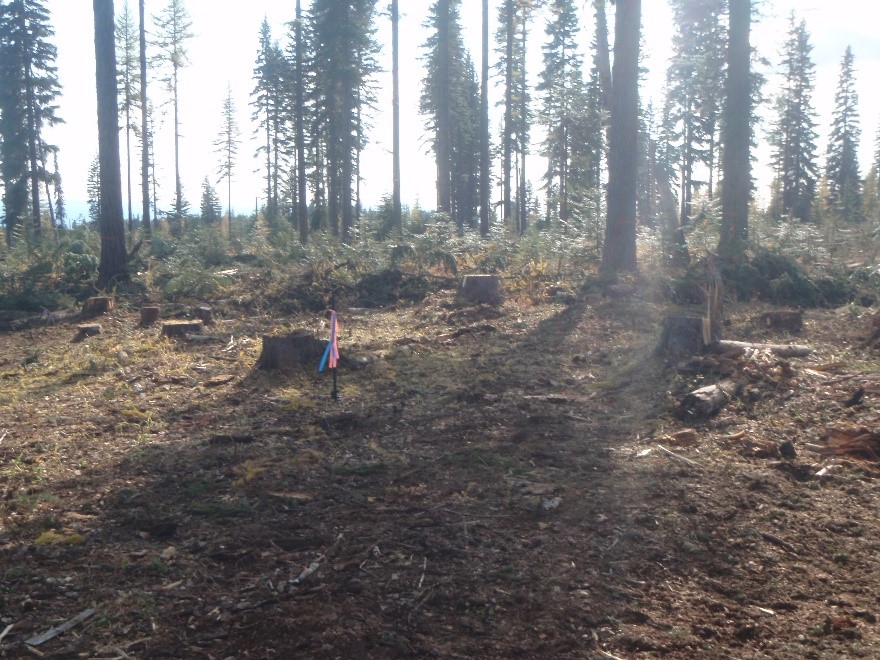
Complete slash removal plot at Loon research installation in northeastern Oregon.
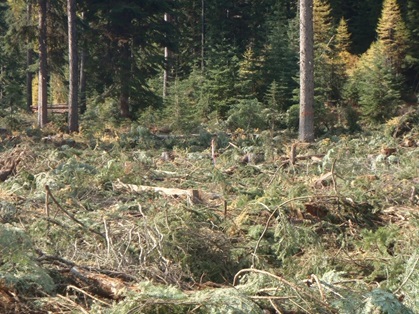
Bole-only slash retention plot at Loon research installation in northeastern, Oregon.
Forest land managers require information of site quality in order to manage stands to meet various objectives such as water yield, habitat management or commodities production. Each of these management objectives requires an understanding of site productivity potential for the range of species that might be managed. Forest stand productivity and density are functions of light, temperature, moisture, nutrients, and species composition. These factors interact at any forest location to create unique site types that define the ecological characteristics (i.e., carrying capacity or growth rate) of an existing forest stand. The Intermountain Forestry Cooperative Site Type Initiative (STI) is designed to geospatially characterize both static and dynamic features that influence forest growth and carrying capacity across the Intermountain West. For IFC member organizations, please contact your representative for access to the IFC Cloud Services portal, or the IFC Director for access.
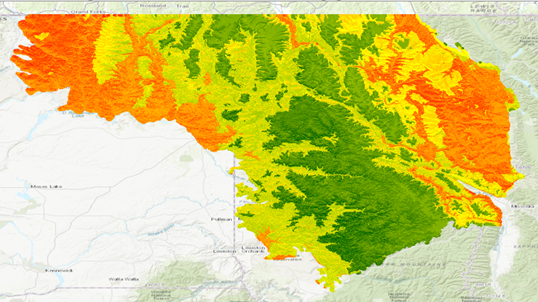
Forest site type mapping as a function of precipitation, heat loading and soil parent material in the northern Rockies.
The Intermountain Forestry Cooperative has spent a decade developing regional forest carrying capacity models for Washington, Oregon, Idaho and Montana. These maximum stand density index models are developed relative to common conifer species mixes found across this region, while sensitive to drivers of site carrying capacity (climate, soils, topography). For IFC member organizations, please contact your representative or the IFC Director for access.
Paired with these carrying capacity models are over 100 field research trials installed in small diameter forest stands across the Inland Northwest to evaluate density manipulation on stand development. The objectives of this Paired Plot Density Management network (PPDM) are to develop density guidelines for small diameter forest stands including growth and resource responses to stand density, while serving as real-time validation of carrying capacity models. Plots at each site were either not thinned or thinned to different spacings depending on site prescriptions. Growth will be monitored through rotation. Growth data will be used to develop yield curves for various site classifications for each of the species studied.
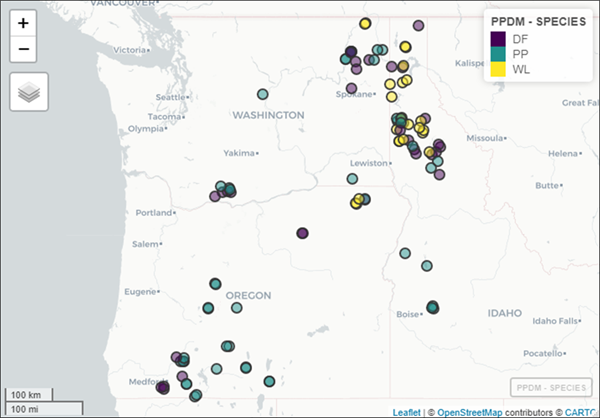
Density management plot network across the Inland Northwest, US.
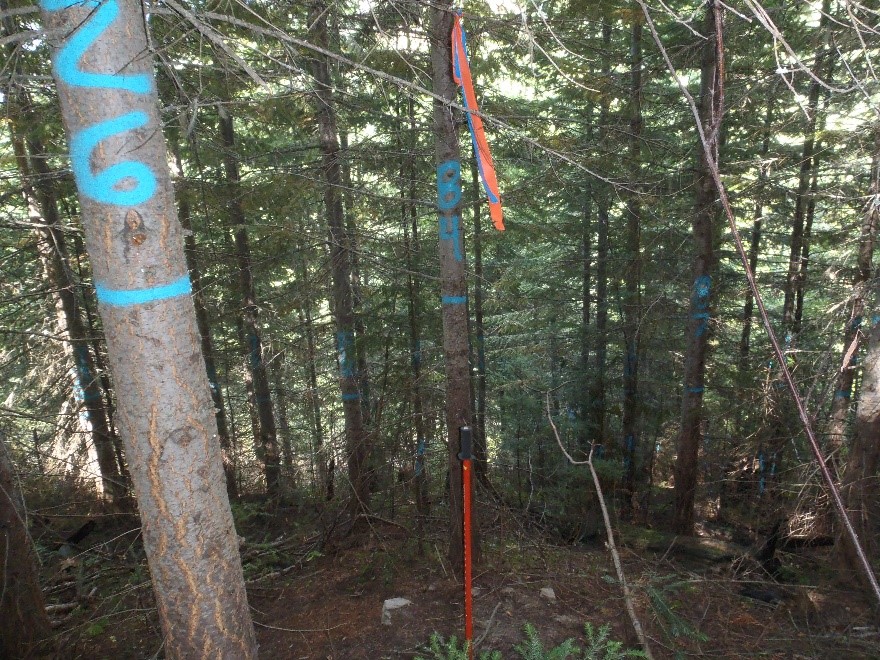
Example density manipulation plot in a Douglas-fir dominant forest.
Realized gain trials (RGT) are often required to validate progeny test results. Progeny trials identify best performing phenotypes relative to desired metrics (typically height, diameter or volume response over some temporal period). Generally, most progeny tests intermix high and low performers, while in contrast, stands are typically outplanted with only the best performing families. Consequently, caution should be exercised when extrapolating progeny trial results to a future stand response. Initial stocking and selected site type location of progeny trials have a large influence on seed lot performance, and thus may not fully reflect long-term gains in operational settings within a species seed zone.
The goal of this study is to assess the differential effect of site type on woods run and improved Douglas-fir growth and mortality from establishment to 30 years across the northern Rockies and the Klamath-Siskiyou Mountains. The overall objectives are to
- Evaluate the effect of site variability, improved seed, and seed transfer on periodic mortality and growth response by study area
- Compute mortality, diameter, height, and volume multipliers for woods run and improved seed as a function of site growth factors
- Integrate multipliers derived at project lifecycles of 10, 20, and 30 yrs into regional growth and yield models
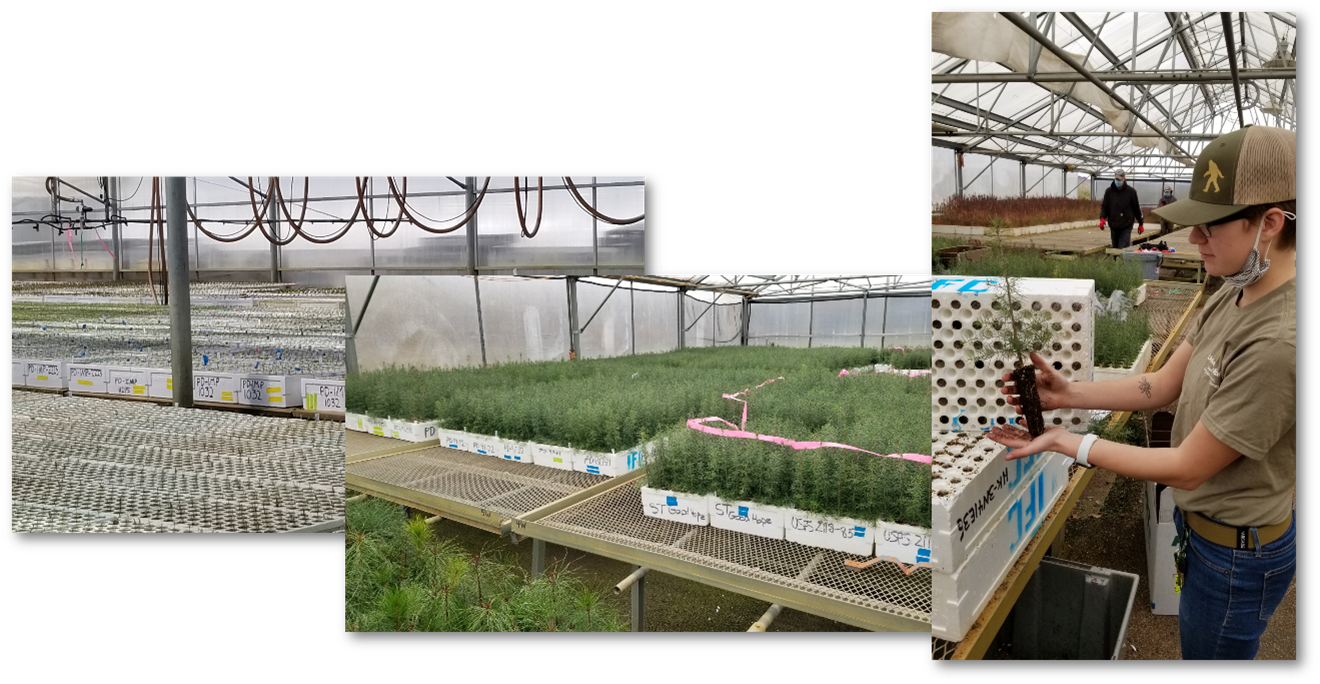
Growing seedlings at Pitkin Nursery for the RGT project.
Member and Grant Related Research
More information coming soon.
More information coming soon.
More information coming soon.
More information coming soon.
More information coming soon.
More information coming soon.
More information coming soon.






